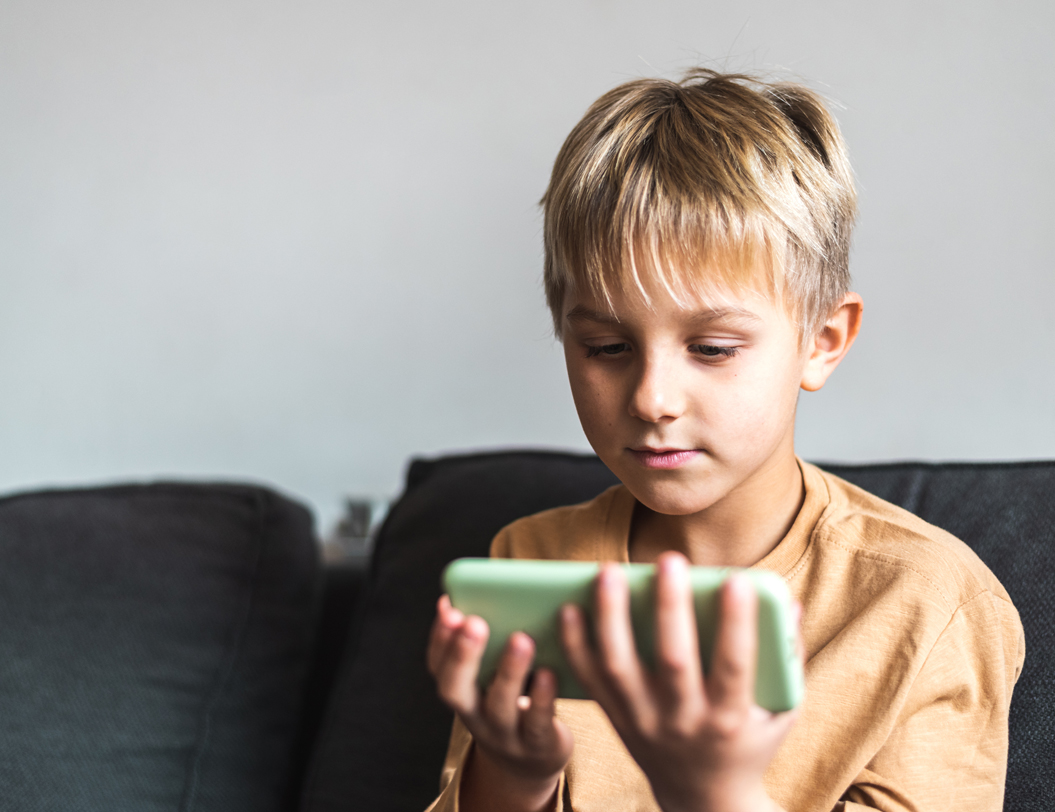Child Cyber Security
Fraud & Security

Spear phishing and specific social engineering attacks toward children and students happen consistently! Follow these tips to keep your kids safe while they navigate their digital world.
Access
The Center for Cyber Safety and Education found that 90% of kids in grades 4th through 8th had at least one device (phone, tablet, or computer). Setting boundaries for online access is important.The Department of Homeland Security’s CISA.gov cautions that “children present unique security risks when they use a computer – not only do you have to keep them safe, you have to protect the data on your computer.”
By changing daily routines and modifying use habits, you can dramatically reduce threats associated with online access.
- Regulate usage times, especially at night when most of the unfiltered access happens. Consider different activities you can do to spend time with your children -- researching homework, playing a game, reviewing family vacation spots, or even designing a newsletter for the family. All these activities facilitate creative supervision time to speak and teach about proper online access comprehension:
- You can’t protect them from what you can’t see, so allow them to use their devices in common areas or better yet with you. It is highly suggested that all devices, computers and gaming consoles (Xbox, Playstation) be used in an open area at your place of residence! If the device is in a high traffic area where family or friends are passing, such accessibility deters children from doing what they know they should not be doing. It also offers an opportunity to disrupt any activity and intervene before any boundary is potentially broken.
- If there must be a computer in a bedroom, make sure the screen faces the door so you can see it. This can help you learn about suspicious activity before anything serious happens.
- Keep devices in a central location in the evening – devices can go to sleep while charging, just like their human owners.
- Consider signing a family device contract or basic written agreement with your family members to develop ground rules regarding device usage.
Controls
Giving a child a device connected to the internet without controls is like giving them a car without driving lessons. It’s highly risky and dangerous.- Many devices can be set up so a child’s account cannot download apps without parental consent. Preventing unauthorized purchases limits fraud and the possibility a child will be lured to download inappropriate content.
- Always set up the device controls before giving it to your child. A number of free and paid for “apps” can be found to also allow adults to monitor any user’s online activity!
- Remember that parental controls are not just for devices; individual applications also allow parental controls in many instances.
Monitor
This may be a hard one for parents, as kids will think you don’t trust them. But monitoring your child’s access and online activity can be a key way to prevent future crises.- Consider various programs to help with monitoring – from free ones like Apple Families or Google Family, to paid services like Net Nanny, Bark, and Life 360.
- Some Internet Service Providers (ISP’s) offer value added services at your gateway router for stricter internal residence networking children controls.
- If you pay for a monitoring service, carefully read the terms and conditions so you know what information is being monitored and who has access to that information.
- The device contract you create with kids can include transparent information about how you will monitor their use. This can help kids understand you do trust them, but want to keep them safe from others who might not have their best interests at heart.
- All suspicious email interactions should become family dinner table discussions.
Suggested Child Service Level Agreement
Individual device contract statements to consider:
- I promise to speak to an adult when anything online makes me feel bad, sad, uncomfortable, or angry in any way.
- I will only treat others’ online how I want to be treated.
- I will not bully other people online.
- I promise to never share passwords outside of our approved family.
- I will not sign up for new accounts or change passwords without permission.
- I will never ask to receive or share photos or videos of myself.
- I agree to never share my personal name, age, birthday, phone numbers, and address.
- I will not speak or interact with strangers through emails, messages, or texts.
Digital Citizenship
For more information on privacy security, cyber bullying, and communicating with your children about their digital world, visit www.commonsense.org/education for the Digital Citizenship program. Parents and teachers can access free content, including videos and exercises to help your K-12 age children understand the importance of cyber safety.
Additional Information
The following resources offer additional information about protecting our kids online:
- Homeland Security Investigations iGuardian Program to Prevent Child Sexual Exploitation
- Concerned Parent’s Internet Safety Toolbox
- Information Technology & Internet Definitions
Important Legal Disclosures & Information
All company names are the registered trademarks of their respective owners.
Related Resources
-
two girls using parents computer
Opens video in a modal
Fraud & Security
Watch VideoChild Cyber Safety Webinar
The internet can be a scary place for adults, so how do our children operate safely in a digital world?
-
Young girl on smartphone
Opens video in a modal
Fraud & Security
Watch VideoChild Cyber Safety Tips
Learn more about how parents and guardians can protect kids online with these tips. -
Banking Email & Website Awareness
Fraud & Security
Read MoreBanking Email & Website Awareness
Use common sense, intuition and extreme care when your personal and financial information is at stake.


